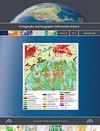以用户为中心优化应急地图符号,方便通用操作图片
IF 2.4
3区 地球科学
Q1 GEOGRAPHY
Cartography and Geographic Information Science
Pub Date : 2021-12-13
DOI:10.1080/15230406.2021.1994469
引用次数: 3
摘要
摘要:在危机情况下,通过共享操作图片,有助于参与应急响应人员之间的共同操作理解。共享通常通过交互式工具实现,无论是桌面工具还是基于网络的工具,地图显示在其中发挥着重要作用。如果(1)在基于地图的互动工具中使用的商定紧急符号足以对多方面的行动信息进行可视化编码,则可以进一步加强这一作用;以及(2)这些符号对于这些工具的不同用户来说是易读的和有意义的。作者重新审视了挪威使用的官方应急地图符号,并根据当前要求重新考虑了这些符号。为此,他们首先与利益相关者举行了几次会议,以提出适当的修订要求。接下来,重新考虑包括符号集的扩展、符号修改和分组。复议结束后,应急管理官员和专家接受了采访。访谈证实了对符号分类、符号扩展及其修改的一致性。受访者还提出了许多建议,供后续研究考虑。此外,还提出了符号标准化和符号协调两个概念。本文章由计算机程序翻译,如有差异,请以英文原文为准。
A user-centric optimization of emergency map symbols to facilitate common operational picture
ABSTRACT Common operational understanding among engaged emergency responders is facilitated through shared operational pictures during crisis situations. Sharing is typically achieved through interactive tools, either desktop or web-based, in which map displays play an essential role. That role can be further strengthened if (1) agreed emergency symbols that are used in map-based interactive tools are sufficient to encode multifaceted operational information visually; and (2) the symbols are legible and meaningful for the diverse users of those tools. The authors revisited official emergency map symbols in use in Norway and reconsidered them against current requirements. To this end, they first conducted several meetings with stakeholders to elicit adequate revision requirements. Next, the reconsideration included the extension of the symbol set, symbol modification, and grouping. After the reconsideration, emergency management officers and specialists were interviewed. The interviews confirmed the agreement with the symbol categorization, extension of the symbols, and their modifications. The interviewees also made numerous suggestions to be considered in a follow-up study. Moreover, two concepts – symbol standardization and symbol harmonization – were proposed.
求助全文
通过发布文献求助,成功后即可免费获取论文全文。
去求助
来源期刊
CiteScore
5.20
自引率
20.00%
发文量
23
期刊介绍:
Cartography and Geographic Information Science (CaGIS) is the official publication of the Cartography and Geographic Information Society (CaGIS), a member organization of the American Congress on Surveying and Mapping (ACSM). The Cartography and Geographic Information Society supports research, education, and practices that improve the understanding, creation, analysis, and use of maps and geographic information. The society serves as a forum for the exchange of original concepts, techniques, approaches, and experiences by those who design, implement, and use geospatial technologies through the publication of authoritative articles and international papers.

 求助内容:
求助内容: 应助结果提醒方式:
应助结果提醒方式:


